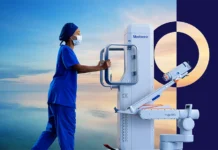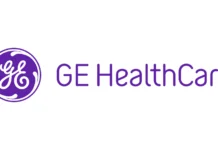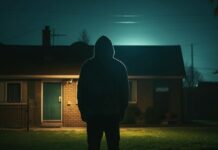Is it true that first aid skills can make a significant difference in the workplace? Indeed, they could be a literal lifesaver.
In this guide, you’ll explore the importance of workplace wellbeing and the first aid skills you need to acquire. It’s not just about knowing how to react during a crisis – it’s also about understanding how to prevent accidents and maintain a safe environment.
Whether it’s handling common injuries or dealing with emergencies, every employee plays a role in promoting safety and health at work.
So, let’s dig into the essential first aid skills you need to know.
Understanding the Basics of First Aid
In the event of a workplace accident, it’s crucial that you understand the basics of first aid to respond effectively and promptly. This knowledge isn’t just for medical professionals; it’s essential for everyone. You never know when you’ll be the first responder in an emergency, and your actions could be the difference between life and death.
You should familiarize yourself with the ABCs of first aid: Airway, Breathing, and Circulation. Ensure the victim’s airway is clear to allow breathing, and check for any signs of circulation like pulse or movement. Administer chest compressions and rescue breaths if necessary.
It’s also important to know how to handle common injuries like burns, cuts, and fractures. For burns, cool the area under running water and cover it with a sterile cloth. If someone’s cut, apply direct pressure to stop bleeding. For fractures, immobilize the injured area, if possible, and seek immediate medical help.
Essential First Aid Skills and Procedures
Building on your basic knowledge, let’s delve into some essential first aid procedures that you should master to handle emergencies effectively at your workplace.
Firstly, you need to be adept at assessing situations swiftly and accurately. This involves checking for safety, identifying injuries, and determining the severity of the situation. You’ll also need to know how to provide immediate and appropriate care until professional help arrives.
Secondly, mastering CPR (Cardiopulmonary Resuscitation) is crucial. It’s a lifesaving technique that’s particularly useful in many emergencies, including heart attacks or near drownings, where someone’s breathing or heartbeat has stopped.
Thirdly, you should learn to handle choking incidents, using techniques like the Heimlich maneuver for adults and back blows for younger individuals. Also, knowing how to treat minor wounds, burns, and fractures can make a significant difference when waiting for medical professionals.
Lastly, familiarizing yourself with the use of an AED (Automated External Defibrillator) can be invaluable, as these machines can help restart a heart that’s stopped beating.
With these skills in your first aid toolkit, you’ll be better equipped to handle emergencies at work.
Now, let’s transition to handling common workplace injuries, a crucial part of workplace wellbeing.
Handling Common Workplace Injuries
Now that you’re equipped with essential first aid skills, let’s tackle how to handle common injuries that may occur in your workplace.
- Cuts or Lacerations:
- These can happen in any work environment, from kitchens to construction sites.
- If someone sustains a cut, your first step should be to clean the wound with warm water and soap, then apply an antibiotic ointment and a clean bandage.
- If the cut is deep and causes significant bleeding, apply pressure with a clean cloth and seek medical help immediately.
- Burns:
- In case of a burn, immediately place the affected area under cool running water for at least 10 minutes.
- Cover the burn with a clean, non-stick bandage or cloth.
- Avoid applying ointments or creams as they can cause infection.
- If the burn is severe, call for medical assistance.
- Sprains or Strains:
- If a colleague sprains or strains a muscle, help them to a comfortable position and apply an ice pack to the area.
- Encourage them to rest and elevate the injured part.
- If the pain persists, they should seek medical attention.
Dealing With Emergency Situations
When your coworker’s life is at stake during an emergency situation, your quick response can make a significant difference. Emergencies can occur without warning, so it’s crucial to stay calm, think clearly, and act swiftly. You must prioritize calling for professional help, but in the meantime, your actions could be lifesaving.
Firstly, assess the situation quickly but thoroughly. Determine the level of danger to yourself, the victim, and others. If it’s safe, provide immediate assistance.
Next, if the person is unconscious, check if they’re breathing. If they aren’t, start CPR immediately. If they’re choking, perform the Heimlich maneuver. You must be trained, though, as incorrect technique can cause more harm.
In case of severe bleeding, apply firm pressure to the wound with a clean cloth, elevating it if possible. Don’t try to remove any objects lodged in the wound.
Remember, you shouldn’t move an injured person unless absolutely necessary as this can worsen their condition.
Finally, reassure the person that help is on the way. Your calm demeanor can help them stay composed and focused.
In essence, being prepared to deal with emergencies is a critical skill every employee should have. It’s not just about saving lives, but also about fostering a safer workplace.
Importance of First Aid Training
Understanding the importance of first aid training for employees in the workplace with Blueguard can’t be overstated, as it equips you with the knowledge and confidence to respond effectively during a crisis. This training is a critical element in ensuring safety and wellbeing, and it’s a key factor that can make a life-or-death difference in an emergency.
Let’s break it down into three main points:
- Safety: First aid training promotes a safer environment by teaching you how to respond to various scenarios, from minor injuries to major health emergencies. This knowledge significantly reduces the risk of further harm.
- Confidence: When an emergency occurs, panic often ensues. However, with proper first aid training, you’ll have the confidence to take charge, provide care, and potentially save a life.
- Legal Compliance: In many jurisdictions, it’s a legal requirement for employers to ensure their staff have access to first aid equipment and training.
Promoting a Safety-conscious Work Environment
In the face of potential workplace hazards, it’s crucial for you to foster a safety-conscious environment, acting as a catalyst for increased awareness and preventative measures. This begins with cultivating a culture where safety isn’t just a protocol, but an ingrained part of the office ethos.
Make sure you’re regularly disseminating safety information and updates to your employees. This could be through posters, emails, or briefings. Remember, knowledge is power, and informed employees are safer employees.
Also, it’s important to facilitate first aid training for all your staff. This not only equips them with essential skills but also underlines the importance of safety. Include drills and simulations in your training to ensure employees are well-versed in handling emergencies.
Engage in routine safety audits to identify and rectify any potential risks. Encourage employees to report any safety concerns they may have – a proactive approach is always better than a reactive one.
Promoting a safety-conscious work environment isn’t just about minimizing risks, injuries, and downtime. It’s about creating a workspace where employees feel valued and protected. And this is a surefire way to boost morale, productivity, and overall business success.
Conclusion
In conclusion, your knowledge of first aid can make a massive difference in the workplace. Remember, 95% of workplace accidents can be prevented with proper first aid training. So, don’t underestimate the value of these skills.
They not only promote a safer work environment, but also empower you to handle emergencies effectively. Stay informed, stay safe, and ensure your workplace does the same.
It’s more than just a job, it’s about creating a culture of care and safety.


















